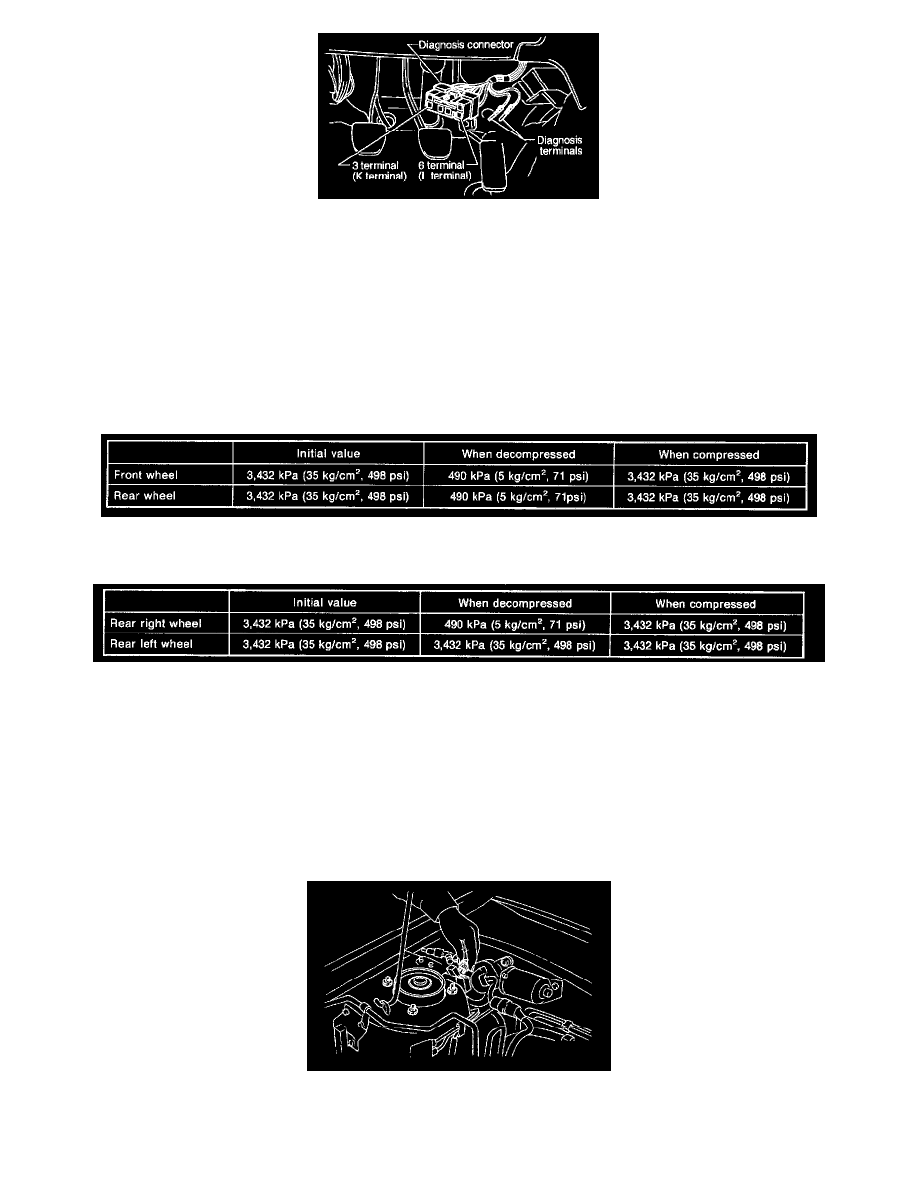Outback [Legacy] AWD F4-2.5L DOHC (1996)

(1) Connect diagnosis terminals to 3 terminals (K) and 6 terminals (L) of the diagnosis connector beside driver seat heater unit.
(2) Turn ignition switch ON.
(3) The ABS warning light comes on.
(4) Depress the brake pedal within 0.5 seconds after the warning light goes out so that the pressure gauge registers a pressure equal to the initial
value.
CAUTION: Do not depress the clutch pedal.
NOTE: The engine must not be operating.
5) When the hydraulic unit begins to work, and first the FL side performs decompression, holding, and compression, and then the FR side performs
decompression, holding, and compression.
6) Read values indicated on the pressure gauge and check if the fluctuation of the values between decompression and compression meets the standard
values. Also check if any irregular brake pedal tightness is felt.
-
In case of hydraulic unit plunger piston malfunction:
7) Remove pressure gauges and RL and RR pipes from the hydraulic unit.
8) Connect the FL and FR pipes to the hydraulic unit.
9) Connect two pressure gauges to the hydraulic unit.
10) Bleed air from the pressure gauges and the FL and FR wheel cylinders.
11) Repeat step 4) procedures.
12) The hydraulic unit begins to work, and simultaneously the RL and RR wheel cylinders perform decompression, holding, and compression.
13) Read values indicated on the pressure gauges and check if they meet the standard value.
14) After checking, remove the pressure gauges from the RL and RR pipes and connect the RL and RR pipes to the hydraulic unit, and bleed air.
Checking the Hydraulic Unit With Brake Tester
1) In the case of AWD vehicles, install a spare fuse with the FWD connector in the engine compartment to simulate FWD vehicles.
